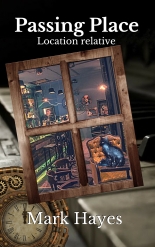This is one of those tales you come across in Lovecraft’s mythos that leaves you with no more than a half-hearted um… It’s just simple and straightforward without any real depth to it. A run of the mill tale that never quite steps out beyond itself. If it leaves you with anything, it’s a mild sense of disappointment, a vague feeling it could have been something more, though it never really tries that hard to be so.It’s a workaday pulp magazine story at best that could have some from any of two dozen writers who contributed to the east coast amateur press at the same time as Lovecraft. The other twenty-three of which no one remembers and unless someone delved through the archives of a collector are less than likely to ever read because no one does reprints of authors no one remembers to start with. If this seems an over harsh criticism, that’s because it is. It is a criticism from someone also a hundred years after the story was written because actually, it’s a rather neat little story feature a rather neat idea that may well have been very original at the time. It is only my 21st-century eyes that are jaded when I read this early 20th-century tale…

So let’s take a step back and consider this a moment or two. Let’s consider the main element of this tale, the witness statement of a man who listened to all the really interesting stuff happening to his friend on the other end of a telephone line. A portable telephone line of the type that while famlier to Lovecraft’s readers in 1920 as a field telephone, was still something strange and rare that they would not often have come across. The idea of listening to someone fighting for there life against some nameless horror. Screaming at you to go, to run, to get yourself safe, forget them, seal them in, seal there fate and just go. All the while you are listening to them describing in broken segments the horror they are seeing.
Randolph Carter himself is an antiquarian and one-time student of the Miskatonic University. In this first tale involving the character, he is the nice but dim sidekick, left at the top of the tomb, that leads down to catacombs of some kind, talking to his compatriot Harley Warren down the field telephone as the other man wanders deeper into the unknown. The character of Carter comes back in five later stories and is to a degree Lovecraft’s alter ego, but in this tale he is in shock, recounting his tale to the police who suspect him or murdering Warren or being otherwise involved in his disappearance. His tale is stuttering and disjointed but is ultimately the survivors’ tale of a horror he witnessed down a telephone line as the person on the other end is lost to the unknown terror that remains off stage.
It’s a plot turn we have all seen a hundred times. It’s the mid-season episode of a crime show that is just ticking over. A ‘B’ movie plot point. It’s not a major stretch from the opening ten minutes of scream. It’s unoriginal at best, a cliche, in the same way as ever, found footage movie is just a bit too much like Blair Witch, whereas what made Blair Witch original, new and exciting was that it was original… Except to my children, it is just another found footage movie…
There then is the crux of ‘The Statements of Randolph Carter’ is it was an original idea. It is just an original idea that has been copied so many times now it seems the most unoriginal story ever. It makes it hard to review now without been caught up in how unoriginal it seems to be, a hundred years after it was written. So it only gets a measly two tentacles now, where bad when it was a fresh new idea it would, I am sure, have scored a more sucker-tastic rating….

Further Lovecraftian witterings












Pingback: The Unnameable: The Complete Lovecraft #39 | The Passing Place
Pingback: Cool Air: The Complete Lovecraftian #46 | The Passing Place
Pingback: The Silver Key: TCL#50 | The Passing Place
Pingback: The Dream-Quest Of Unknown Kadath: TCL #52 | The Passing Place